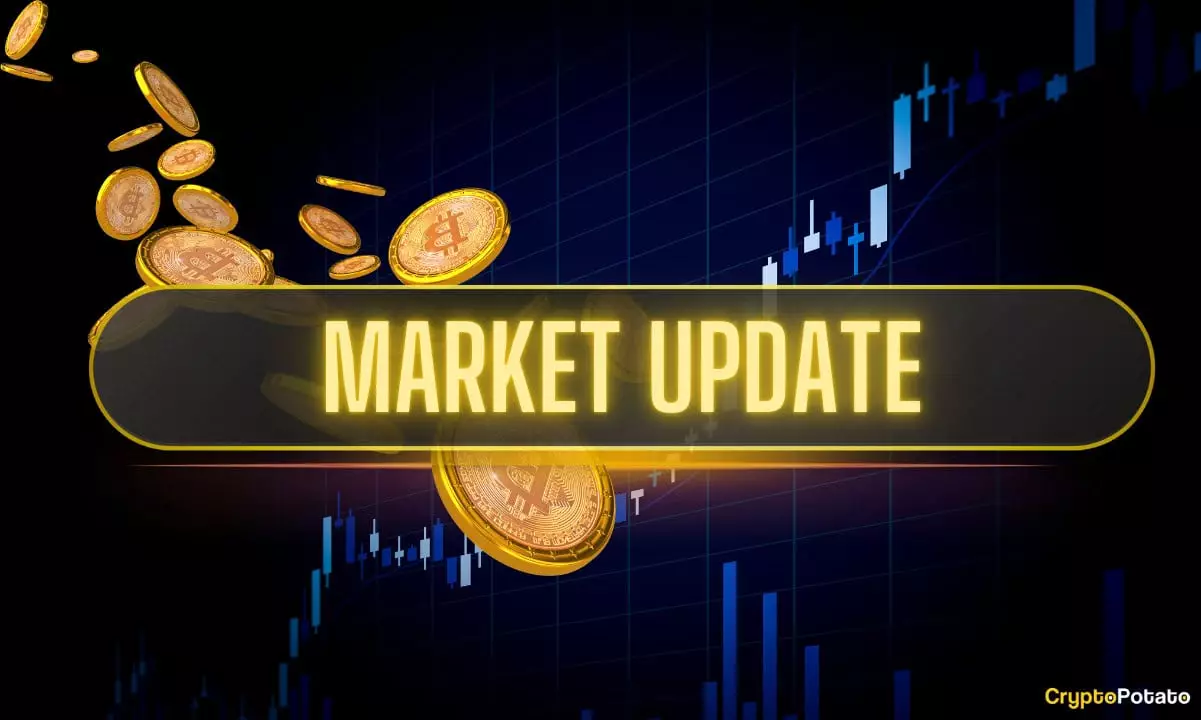In the age of unprecedented global tension, Bitcoin has remarkably shown resilience. However, it begs the question—should we admire its stability in a chaotic world or question the underlying reasons for it? The week began with a terrifying missile strike from Israel on Iran, resulting in significant fatalities—including high-tier military personnel. This act not only escalated hostilities in the Middle East but also sent shockwaves through the cryptocurrency market. Bitcoin’s price plummeted from over $108,000 to just below $103,000 within moments.
Yet, despite this jarring event, the digital currency managed to stabilize and eventually reclaim some of its lost value, hovering between $104,000 and $106,000. This strange dichotomy raises a critical point: when global events destabilize conventional markets, does Bitcoin simply adapt to becoming an alternate safety net or is it just reflecting a collective gamble from investors willing to navigate these murky waters? The true resilience of Bitcoin poses a challenge to the notion that it’s a safe haven in turbulent times.
The Illusion of Female Resilience amidst Tension
As Iran retaliated, and the geopolitical narrative unfurled rapidly, it seemed that Bitcoin’s recovery could be interpreted as either astute market behavior or a superficial hoax. By mid-week, the U.S. Federal Reserve held its interest rates steady, but Bitcoin’s notable price fluctuations reflected more than just economic metrics. Near the week’s end, news that Iran might consider limiting its uranium production buoyed Bitcoin’s price, yet this is paradoxical when assessed against a backdrop of conflict that could turn any moment chaotic.
For a currency to be deemed resilient—especially one as volatile as Bitcoin—the market must attract a broader range of investors beyond institutional stakes. Current reports indicate that substantial transactions are predominantly being conducted by large institutional players, while retail engagement remains disconcertingly low. This scenario raises the concern of whether Bitcoin’s price stability is indeed an indicator of long-term viability or merely the advantageous maneuver of deep-pocketed players who can afford to make calculated bets amidst uncertainty.
Traditional vs. Innovative Investments: A Cultural Shift
The stark contrast between Bitcoin’s performance and the performance of alternative cryptocurrencies raises critical reflections on asset dependency and investor psychology. While Bitcoin’s volatility can often be thrilling, its role as a digital asset increasingly reflects a cultural divergence in investing habits. The high-flying performance of the World Bank Token (WBT), with a staggering 45% increase, stands in stark contrast to others like Cardano and HYPE, which saw declines of 5% and 7%.
This disparity illustrates a concerning paradigm shift in which retail investors—ordinary people intent on making responsible financial choices—are lacking from the Bitcoin narrative. When a market becomes dominated by heavy hitters, one must ponder the sustainability of this trend. The master narrative seems to suggest that Bitcoin is no longer a grassroots movement or an alternative financial resource but evolves into yet another playground for risk-seeking institutions.
Legislative Implications: Are We Setting the Stage for Transformation?
In the midst of all this, emerging regulatory frameworks are beginning to catch up with the dynamic world of digital currencies. The U.S. Senate’s recent approval of the GENIUS Act—a legislative measure governing stablecoins—indicates a growing acknowledgment that cryptocurrencies like Bitcoin exist within a larger regulatory world. While these regulations aim to create a safe framework for crypto engagement, they bring fresh challenges as firms like Tron’s Justin Sun pave their paths towards U.S. public offerings.
Stable legislation could provide a reassuring safety net for retail investors, possibly stimulating renewed interest in Bitcoin. However, it also runs the risk of crafting an environment where institutions dominate the game, mitigating Bitcoin’s allure as a decentralized asset class.
Market Dynamics: Institutional Giants vs. Retail Ambassadors
An analysis of Bitcoin’s market structure reveals a telling narrative of powerlessness among everyday investors. With a staggering market cap exceeding $3 trillion, Bitcoin has undeniably established itself as a titan within the financial ecosystem. But in terms of actual engagement, the retail community seems increasingly sidelined. Headlines suggest that prominent players such as Michael Saylor’s Strategy continue to bulk up on Bitcoin, while smaller investors watch from the sidelines, perhaps feeling disillusioned or apprehensive.
In a time when volatility is the name of the game and uncertainty looms large, does Bitcoin truly reflect strength, or does its performance indicate a troubling shift away from the average investor? As Bitcoin hovers around the $106,000 mark, one must remain critical of the stark realities that underpin its value. The moment we forget the ethos of cryptocurrency as a vessel for democratizing financial power, we step dangerously close to transforming Bitcoin into merely another wall street tradable commodity.
This ongoing evolution in the cryptocurrency landscape invites an essential discourse—one that interrogates our fundamental beliefs about currency, investment, and the implications of a digital age that appears driven more by institutional interests than by the populist ethos for which it ostensibly stands.


Leave a Reply